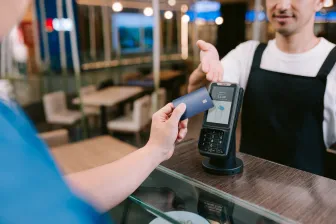Japan is known for its distinctive culture, a captivating blend of traditions, and cutting-edge technology. It's a nation that embraces automation, combining robotics with ingenuity. A visual presentation of this is its ever-present vending machines at every corner of the country. It's a phenomenon that gives us an insight into the large-scale adoption of unattended payments and commerce, which we will explore in this article.
Beyond Beverages and Snacks
Like the convenience store, these ubiquitous colorful metal boxes are integral to Japanese society. They are found across the bustling streets of Tokyo, at highway rest stops, and by roadsides in the rural countryside. About 4 million vending machines exist today, approximately 1 for every 31 people in Japan.
These machines sell hot and cold drinks, snacks, toys, tobacco, and novelty items like canned cakes and edible insects. But the question is not what these self-operated machines sell. It's what more can they sell? The Japanese have taken this retro dispenser to the next level by selling daily and random consumables, sometimes even the unimaginable, to satisfy the hectic life of today's consumers.
Some of these items include freshly made restaurant food like sashimi or ramen for those on the go. Others include winter jackets and underwear to beat the line at retail shops. High-end foods such as caviar and Wagyu have also made it into these self-serve boxes. If you forget a tie or fresh flowers for your dinner date? There's a vending machine for that too!
Although the number of vending machines in Japan has declined over the past decade due to the rise of convenience stores, the popularity of online shopping, and the shrinking population, its revenue is still expected to be around a whopping US$1 billion in 2024. This is a testament to the immense demand for convenience and automation in the modern Japanese lifestyle.
Unveiling Japan's fascination with automation
Japan is ahead of it curve when it comes to unattended commerce. They've found the sweet spot in using robotics and automation to serve their convenience-lover nation. However, these innovations are born out of necessity rather than frivolous entertainment.
- Efficiency and culture of convenience
The Japanese place a high value on efficiency and convenience. So, it is no surprise that self-service technologies like vending machines have found widespread appeal. Machines rarely make mistakes, which is hard to do in a human-run place.
As for convenience, they are available 24 hours, making them accessible anywhere, any time of the day. With the push for a cashless society in Japan, consumers can make contactless payments on vending machines using their smartphones and prepaid IC cards, which they use to pay fares on public transportation.
- Labor shortage and automation
Nearly 30% of Japan's population is over 65, and the country has the most significant percentage of older adults globally. And its birth rate is declining at a record low for the seventh consecutive year in 2022. In the factories and service industries, mainly transportation and restaurants, Japan has filled its workforce challenges with automation for decades.
For instance, in post-pandemic Japan, restaurants are facing severe labor shortages. Workers who were let go are now afraid to return to the restaurant industry, which is deemed vulnerable to another similar global outbreak. As a result, restaurant owners are adopting self-ordering or checkout machines, minimizing human operation and further boosting automation.
Japan showed us the impact of a shrinking workforce where unattended commerce is crucial in a functioning society. And what's happening in Japan now is coming to the rest of the world.
The global labor market is becoming tighter as workers switch to better opportunities. Employees are now unwilling to have low-paying, long-hours, and labor-intensive jobs. The global workforce crisis is predicted to have $10 trillion at risk if not mitigated. And automation helps to speed up the process and fill the gap in a workforce shortage.
Self-service is here to stay
Like the vending machine model but on a larger scale, unmanned convenience stores or Konbini are rising in Japan as economic activities recover after the pandemic. Konbini has a few employees and customers self-checkout with unattended payments. Some advanced stores are equipped with AI, cameras, and sensors to detect products picked up by customers.
As seen in the US, Amazon Go proved an automated physical store is possible and gained attention. But the technology is far from saving costs. In fact, running one could be costly with an array of cameras, sensors, and artificial intelligence. Furthermore, the payment is limited to linking bank or credit cards to Amazon accounts, leaving the unbanked and underbanked population out.
For many countries, these advanced technologies will only see the light of day when proper infrastructure is in place. But as the world faces a tightening labor market, this is where unattended payments and commerce come into play.
Seamless integration of unattended payment
Unattended commerce is everywhere. Ordering at fast food restaurants, paying transportation tickets, buying groceries or fuel. And the payment is the final stage that completes the transaction.
Self-service technology is now fitted with giant touchscreens, personalization, and intelligent inventory management. They also accept multiple payment methods like debit and credit cards, contactless payments, digital wallets, and QR codes. Biometrics is also gradually becoming more familiar in payments, with various experiments underway to elevate the customer experience.
In Japan, biometric authentication is already used on vending machines in employee cafeterias. The technology improves service efficiency and swiftly completes transactions, leading to shorter wait times and reduced congestion. With the high level of security, biometrics removes the need for employees to carry physical devices or IC cards for purchases.
As self-service evolves, let's examine what makes integrating unattended payment terminals distinctively different than those supervised in-store and how advanced technology has made them increasingly complex.
- Withstand the elements
Self-service can be placed indoors or outdoors. The payment terminal that comes with it is designed to handle harsh conditions like intense heat, torrential rain, and freezing temperatures. It is also intended to be tough enough to protect itself from dust and humidity to handle frequent use in high-traffic areas.
- Secure and vandal proof
These self-service stations are not manned or constantly monitored, which means they must have the highest level of security. With unattended payments, sensitive customer information is protected with encrypted data transmission. The payment terminal's robust and anti-vandal hardware prevents unwanted attempts of tampering or theft. This gives merchants and customers peace of mind, knowing transactions are performed safely.
- Accept all payment options
Although payments in these machines may appear limited at first glance, they can adapt and evolve. Whether it's a card, a QR code, or a mobile wallet, payments for unattended commerce need to keep pace with customer preferences and have the same flexibility as online or in-store payments. Contactless payment is best suited to a self-service industry, where hygiene is a business imperative.
- Fit into any use cases
Unattended payment POS terminals are characterized by their versatility, adapting to various use cases and environments. Self-service payment terminals fit in any self-service situation, such as vending machines, restaurant kiosks, ticketing booths, and self-checkouts. Terminal hardware and software are customizable for easy integration, resulting in a seamless and personalized business and customer experience.
- Compact design and preserving aesthetics
In addition to functionality, unattended payment terminals must be compact and blend seamlessly with the self-service kiosk. A compact designed terminal makes it easy to install and optimizes space within these machines. It must also enhance the self-service kiosk's visual appeal, contributes to a sense of cohesiveness, and please the customer experience.
Ingenico: Your trusted partner in the self-service solution
With over 35 years of experience as a pioneer and leader in self-service payments, Ingenico offers a comprehensive range of self-service payment terminals.
We know that self-service payment terminals' lifecycles span over 10 years. Recognizing this, we have designed our solutions focusing on sustainability and consistency, ensuring that our products deliver reliable performance throughout their extended lifespans.
- Indirect market and collaborative approach
At Ingenico, we work exclusively with integrators, Value Added Resellers, Payment Service Providers, and acquirers to deliver optimal solutions. We enable them to offer comprehensive solutions to their end customers. Through this approach, we maintain strong and mutually beneficial relationships with the payment ecosystem.
- Tailored Solutions for Different Industries
There is no one size fits all solution. Whether vending, retail, hospitality, EV charging, petrol, transportation or parking, our self-service payment solutions are modularity in design to meet every industry’s specific requirement and need.
- Seamless Integration and Customization
Through our innovative Self series, we continuously reinvent the self-service business, making installing and operating unattended payments flexible, easy, and secure.
- Enhanced Security Features
Security is a top priority in self-service environments. Our payment terminals incorporate advanced security features to protect sensitive customer data. Encrypted data transmission and anti-vandal hardware safeguard against unauthorized access and tampering attempts, providing assurance to merchants and customers.
- Global Presence and Expertise
With a presence in 70 countries worldwide, Ingenico is a pioneer and leader in self-service payments. Our extensive experience in payment technology, payment terminal fleet management, and customer support ensures that we provide our partners a seamless and reliable self-service experience.
- Unlock the full potential of unattended payments
Enhance your business operations, take the next step, and explore our self-service payment terminals today. Contact Ingenico Japan to discover how our solutions can revolutionize your business and deliver a secure and convenient payment experience for your customers.











